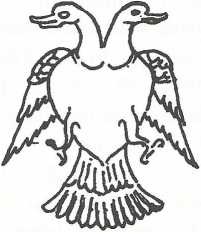Talk:Gandabherunda
Gaṇḍabheruṇḍa The Gaṇḍabheruṇḍa, a doubleheaded eagle, has been the State symbol of many a royal dynasty, especially in South India. Prominent among them are the emperors of Vijayanagara and the kings of Mysore. It continues to be so, of the Karnataka State even now
According to the highly sectarian accounts of the purāṇas, Viṣṇu as Narasirṅha was conquered by Śiva as Śarabha (an animal more fierce than the lion). Then Viṣṇu took the form of Gaṇḍabheruṇḍa and subdued Śiva in the guise of Śarabha! The bird Suparṇa of the Rgveda may be an early edition of this bird-monster. The Gaṇḍabheruṇḍa symbol has been traced to the Indus Valley civilisation, at Mohenjo Dāro and later found at Takṣaśilā (Taxila) also. The well-known folk-tale poem, the Pañcatantra, mentions this bird in one of its tales. In the village Balligāve in the Shimoga district of Karnataka, there is a pillar of the Cālukyan era (A. D. 1047) depicting the deity Bheruṇḍeśvara (deified Gaṇḍabheruṇḍa) along with an edict. The bird—according to the archaeo-logists and historians—signifies peace, progress and power.


